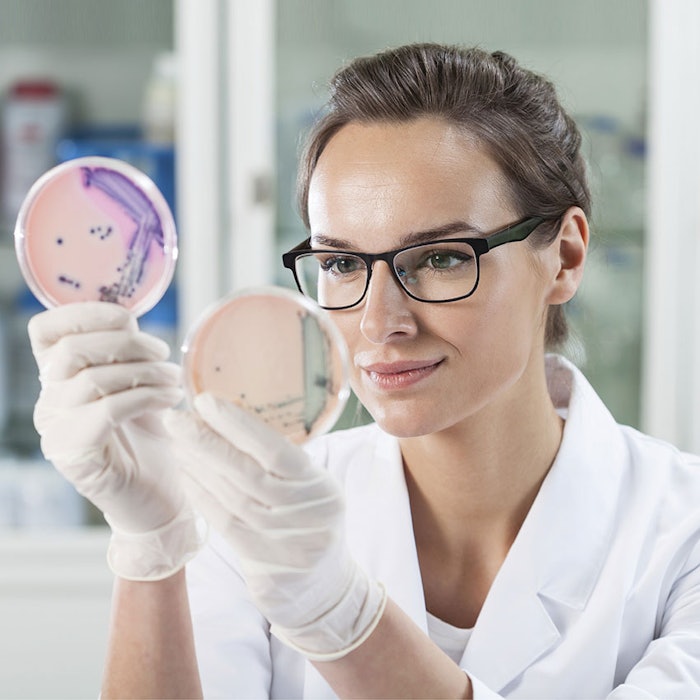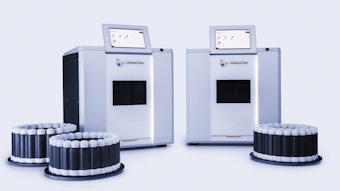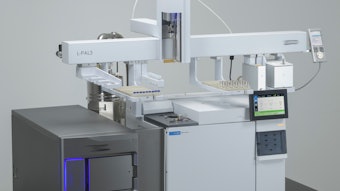
This second in a two-part series provides an overview of some important areas relevant to preparing for the U.S. Food and Drug Administration’s (FDA’s) inspection of cosmetic microbiology laboratories. It includes discussions on microbial culture maintenance, growth media, biochemical reagents, test procedures, documentation and investigations. Part 1 addressed personnel, facilities and equipment, test materials and procedures and documentation.1
The microbiology quality control laboratory performs a critical function for cosmetic product manufacturing in safeguarding the quality, integrity and safety of finished products. The importance of preparation for an inspection cannot be underestimated.
Understanding the FDA’s expectations and preparing your facility accordingly will demonstrate good management practices. In a cosmetic manufacturing facility, the inspector is entitled to inspect all pertinent manufacturing and filling equipment, finished and unfinished materials, storage containers, labeling materials and personnel qualification and training records associated with the manufacture of the product.2
Culture Maintenance
Microbial cultures are used within microbiology laboratories to perform certain important tasks, including: promoting microbial media growth; acting as positive and negative controls for biochemical diagnostic tests; testing biochemical identification kits and cards for quality control; and validating microbial test methods. In general, it is common practice to limit the use of microbial cultures to no more than five passages or transfers from an original American Tissue Culture Collection (ATCC) vial. The purpose for this limitation is to prevent phenotypic drift in the appearance of microbial growth for a culture. In addition, proper documentation should be kept to confirm the identity of the used stock cultures.
Microbial Growth Media
In-house, laboratory-prepared media: For each received lot of dehydrated microbial growth media, e.g., agar and enrichment broth, the “Date Received” and “Date Opened” should be marked on all containers. Furthermore, it is recommended that microbial growth media be rotated so the oldest container is used first—i.e., first in, first out or FIFO. This practice helps to reduce the expiration of microbial growth media, which cannot be used. In addition, microbial growth media, supplements and additives should be stored according to the manufacturer’s directions.
During media preparation, supplements and additives should be added at the correct temperature to avoid their chemical degradation or destruction. Each batch of microbial growth media prepared in-house should be rehydrated with the proper type of water, e.g., distilled, deionized or the equivalent. In addition, each batch of microbial growth media must have an individual batch record including: the name of the media, date of preparation, manufacturer’s lot number, quantity of each ingredient weighed, quantity prepared, signature of the preparer, volume dispensed and the number of units dispensed. This information should be reviewed for accuracy and signed by the laboratory supervisor.
After sterilization, each prepared batch of microbial growth media should be checked for pH, sterility and microbial growth promotion before being used in microbial testing. Laboratory procedures must list the acceptable pH ranges and methods for testing both pH and sterility for each in-house prepared microbial growth medium.
Finally, each prepared batch of microbial growth media should be tested for its ability to recover the presence of microorganisms in a test sample. This is achieved by inoculating the medium with appropriate types of microorganisms at a level less than 100 colony-forming units (CFU). If a selective/differential microbial growth media is used within a laboratory, the microorganisms to be inhibited during actual testing should be included in the growth-promotion testing in order to provide accurate and characteristic biochemical reactions.
Each lot of prepared growth media from vendors should be re-checked for pH, sterility and growth-promotion to ensure no changes occurred during shipment.
Vendor-prepared media: Each lot of prepared microbial growth media received from an outside vendor should have a Certificate of Analysis, including the following information: manufacturer’s name and address of preparation facility, pH check, sterility check and microbial growth-promotion test data. However, it is recommended that each lot of prepared microbial growth media received from the outside vendor be re-checked for pH, sterility and microbial growth-promotion to ensure the media was not adversely affected during shipment.
Storage and expiration dating: Prepared microbial growth media must be stored under the appropriate conditions. This includes protection from light exposure—if it is sensitive to light—and storage at the appropriate temperature, per the manufacturer’s direction. Expiration dates for laboratory-prepared media also should be established by performing growth-promotion testing on aged lots.
Microbial count diluents: Microbial count diluents are used to prepare serial dilutions of a test sample to measure a microbial count per gram or milliliter. Microbial count diluents often contain ingredients to neutralize the antimicrobial activity of preservatives present in the test samples. The neutralizing activity of the microbial count diluents should be demonstrated and documented prior to conducting the microbial testing of samples.
As with microbial growth media, microbial count diluents are prepared in-house and each must have an individual batch record indicating: their name, date of preparation, manufacturer’s lot number of ingredients, quantity of each ingredient weighed, quantity prepared, signature of the preparer, volume dispensed and number of units dispensed. Each record should be reviewed for accuracy and signed by a second laboratory individual. Furthermore, each batch should be checked for microbial sterility after sterilization and before being used in microbial testing.
Reagents, Chemicals and Identification Kits/Cards
Chemicals and biochemical reagents such as Gram stain, oxidase, coagulase, catalase, etc., should be checked for expiration prior to their use and, if expired, be discarded. The specificity of each new lot of biochemical reagent also should be checked prior to or at the time of use with an unknown microbial isolate by using positive and negative microbial test controls.
Furthermore, each lot of biochemical identification cards or kits used to identify microbial isolates must be quality control-tested per the manufacturer’s recommended quality control test microorganisms before use in order to verify the kits or cards were not adversely affected during shipping. Also, if 16S and 23S rRNA sequencing is performed on microbial isolates for identification purposes, it is recommended that each lot used for extraction and sequencing rRNA be tested on bacterial, yeast and mold reference strains to verify the reagents were not compromised during shipping. If biochemical reagents or identification cards/kits are unable to provide the necessary biochemical reactions for each isolate, they should not be used for routine microbial testing.
Microbiological Test Methods
To test the microbial bioburden of a raw ingredient or finished product, most cosmetic companies use in-house methods based upon those outlined either in the Microbial Limits Test Section 61 in the U.S. Pharmacopeia,3 PCPC M-1 and M-2 guideline methods,4 or from ISO. However, each of the microbial content test methods used should be validated and documented to ensure accuracy of the results. In general, microbial content test methods are validated by spiking test samples with several types of microbial species at levels less than 100 CFU/gram to demonstrate the method can recover a low level of microorganisms.
For enrichment testing of cosmetic products, samples are inoculated with less than 100 CFU of the following microorganisms in an enrichment broth containing preservative neutralizers: Escherichia coli ATCC 8739, Staphylococcus aureus ATCC 6538, Pseudomonas aeruginosa ATCC 9027, Candida albicans ATCC 10231 and Burkholderia cepacia ATCC 25416. After inoculation with a test microorganism, the enrichment broth containers with product are incubated.
After incubation, the recovery of each spiked test microorganism in the incubated enrichment broth is verified by streaking an aliquot of the broth onto appropriate selective/differential microbial growth agars and/or a general purpose microbial growth agar such as Soybean-Casein Digest Agar Medium. It is recommended the recovered microbial isolates be Gram-stained and biochemically identified to confirm the actual isolation of each spiked test microorganism.
The microbiology quality control laboratory performs a critical function for cosmetic product manufacturing.
For validating the microbial enumeration method for a test sample, the above-named microbial species can be used, as well as Aspergillus brasiliensis ATCC 16404. Here, each test microorganism is separately inoculated in a test tube or container of a microbial count diluent with preservative neutralizer and either a 1.0- or 10-g test sample; and a test tube or container with only the microbial count diluent with a preservative neutralizer in which the final concentration of test microorganisms is less than 100 CFU/milliliter.
Next, one milliliter aliquots from these dilutions are aseptically removed, plated and incubated. After incubation, microbial counts of the diluents with and without the sample are compared. The enumeration test method is considered to be validated if there is no more than a ± 0.5log difference between the two microbial counts or if the difference in counts is not less a 70% for each test microorganism.
Documentation
The purpose of documentation in a microbiology laboratory is to provide a written record of procedures—as well as the activities—that have occurred. For example, the operational history of a laboratory is usually maintained through the retention of documents such as logbooks, worksheets, calibration records, etc. However, any laboratory function performed must be described in the laboratory procedures, which should be reviewed and updated when appropriate.
Forms used to document test results should be periodically reviewed and updated to reflect current practices, as should written standard operating procedures and test methods. Procedures for electronic data recording and data integrity assessments should be developed, implemented and periodically checked.
Investigations and Discrepancies
Each laboratory should keep a formalized investigation procedure in place in order to manage the occurrence of finished products that register microbial test results that are out-of-specification (OOS). The purpose of this is to establish the root causes for test failures and implement corrective actions to prevent them in the future.
The procedure should include complete details related to the process, findings and results, and should be supported by adequate scientific rationale. Any discrepancies in the equipment or microbial test results for raw ingredients, finished products and environmental test samples should be investigated, documented and evaluated by the appropriate personnel.
Conclusions
In addition to the practices described in Part 1 of this series,1 procedures for the maintenance of microbial cultures, and testing and storage of microbial growth media and diluents should be developed, implemented and documented. Finally, formalized procedures for investigations of discrepancies and OOS test results must be documented. These preparations for FDA inspections are necessary to maintain the quality of products and ensure that costly violations do not occur.
References
- DJ English, M Entrup, JM Nikitakis and JF Krowka, Is your microbiology lab FDA-compliant? Upon inspection, part 1: Personnel, facilities and equipment, Cosm & Toil 133(50) 24 (May 2018)
- JM Nikitakis, ed, FDA inspections, Personal Care Products Council Quality Assurance Guidelines, The Personal Care Products Council, Washington, DC (2014)
- 341-National Formulary-364, Microbiological best laboratory practices <1117>, U.S. Pharmacopeia, United States Pharmacopeia Convention, Inc., Rockville, MD (2017)
- http://uscode.house.gov/view.xhtml?req=(title:21%20section:361%20edition:prelim) (accessed May 24, 2018)











